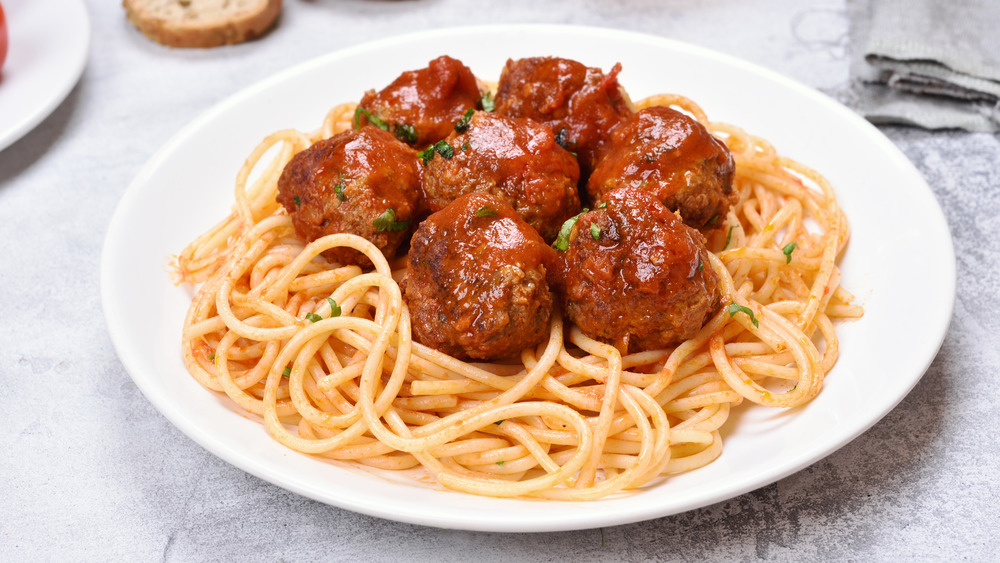The Surprising Truth About Spaghetti And Meatballs
Lasagna, baked ziti, ravioli, pasta carbonara — there are plenty of delicious pasta dishes to choose from when you're eating at your favorite Italian restaurant. But there's one classic that never fails to disappoint: spaghetti and meatballs. Who can resist slurping up saucy noodles with a side of juicy, meaty orbs? It's what many of us would consider the OG Italian comfort food, a meal that's simple yet oh, so satisfying.
In a survey reported by Canada's The Chronicle Herald, conducted by Italy's Parmigiano Reggiano Consortium, over half of respondents chose spaghetti and meatballs as their favorite "feel-good" meal. It's something most of us have likely ordered at a restaurant or whipped up at home for pasta night more than once in our lives. But while the comfort food is a favorite among North Americans, it might not be such a favorite in Italy. The dish we all consider so Italian likely won't have those living across the pond saying buon appetito any time soon.
Meatballs aren't actually Italian
Prepare for your mind to be blown: What you think of as one of the most classic Italian dishes might not be so Italian after all. Smithsonian Magazine reports that if you go to Italy, you probably won't find spaghetti and meatballs on the menu anywhere, because the dish wasn't actually born in Italy. Instead, it was created by Italian immigrants who came to America and couldn't afford high-quality meat. As a solution, they began making meatballs with breading and other filler, to make what meat they could buy last longer. They paired the results with spaghetti and tomato, sauce because they were two of the few Italian ingredients available in the U.S. at that time.
According to Così Italiano, you can still find meatballs in Italy — they just won't be the ones that you're used to seeing at Italian restaurants in the U.S. Authentic Italian meatballs, known as polpetta, are smaller — they range in size from that of a marble to that of a golf ball — and can be made with anything from veggies to fish to meat. They're also traditionally eaten on their own, or perhaps in a broth or tomato sauce, rather than tossed with spaghetti.

